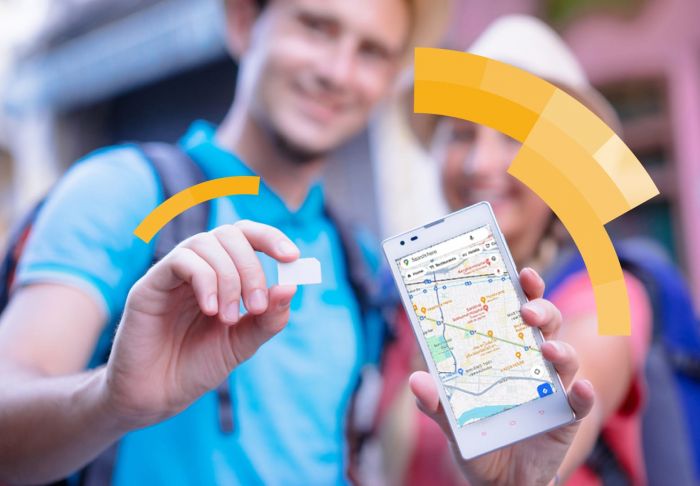Have you ever landed in a new country and struggled to connect to the internet? You need an internet connection for everything starting from booking a taxi, checking maps, or messaging friends, which makes life much easier. A Thailand travel eSIM is one of the easiest and most efficient solutions, allowing travelers to connect instantly without the hassle of buying a physical SIM card. This guide will walk through the different ways to set up mobile data in Thailand and help travelers easily connect.
Why Mobile Data is Essential for Travelers in Thailand
Traveling without mobile data can help you make simple tasks more complicated. Some public networks require registration, while other wifi connections may be slow, especially in crowded places. For travelers who need quick and secure internet access at all times, having a personal mobile data plan is the best option.
Mobile data is quite helpful for many reasons such as for navigation apps, book transportation, translating menus, and staying in touch with family and friends. There are several ways to set up mobile data in Thailand, but a Thailand travel eSIM offers the most convenience. It allows travelers to activate a data plan before they arrive, ensuring they have internet access the moment they land.
Choosing the Right Mobile Data Option

Travelers have multiple options when it comes to getting mobile data in Thailand. Each option has its benefits, depending on the length of stay, budget, and data needs. Here are the most popular choices:
- Prepaid SIM Cards: They are available at airports, convenience stores, and mobile shops. They come with a set amount of data and can be used immediately after activation.
- eSIMs: A digital SIM that eliminates the need for a physical card. Travelers can purchase and activate them online before arriving in Thailand, making them one of the most hassle-free solutions.
- Pocket Wi-Fi Devices: Many people use portable routers to provide internet access for multiple devices; it’s the best option for group travelers. However, they require rental and must be returned after use.
- International Roaming: Many travelers use home International roaming services, but this option is usually expensive and may have limited data.
For most travelers, eSIMs or prepaid SIM cards are the best options. They provide flexibility, affordable data plans, and strong network coverage throughout Thailand.
Setting Up an eSIM for Instant Connectivity
One of the easiest ways to get mobile data in Thailand is by using an eSIM. Unlike prepaid SIM cards, an eSIM is activated digitally, so swapping out a physical SIM or visiting a store is unnecessary. Here’s how travelers can set up an eSIM before or after arriving in Thailand:
- Check Device Compatibility: Not all smartphones support eSIMs. Most newer iPhones and high-end Android devices have this feature, but travelers should confirm before purchasing a plan.
- Purchase an eSIM Plan: Travelers can buy an eSIM online from various providers. Plans are available based on different data limits and trip durations.
- Receive a QR Code: The provider will send a QR code via email whenever you purchase it.
- Scan and Install the eSIM: Travelers simply scan the QR code in their phone’s settings to activate the eSIM.
- Enable the eSIM on Arrival: Once you land in Thailand, the eSIM automatically connects to the local network, ensuring immediate internet access.
This simple process takes only a few minutes, making it one of the most efficient ways to stay connected while traveling.
Comparing eSIMs and Prepaid SIM Cards
Some travelers may wonder whether to choose an eSIM or a prepaid SIM card. While both options provide mobile data, there are a few key differences:
- Convenience: An eSIM can be activated before arrival, while a prepaid SIM card requires visiting a store or airport kiosk.
- Setup Time: Setting up an eSIM takes just a few minutes, while buying a SIM card in Thailand may take longer due to registration requirements.
- Physical Storage: With an eSIM, there’s no need to carry or swap out SIM cards. Prepaid SIMs, however, require keeping track of a physical card.
- Network Coverage: Both options provide good network coverage, but an eSIM allows users to switch providers quickly.
Many travelers hate waiting at the airport for SIM Cards. So, for those who want a quick and seamless way to connect, an eSIM is the better choice.
Conclusion
Having reliable mobile data while traveling in Thailand is essential for navigation, communication, and staying informed. While public Wi-Fi can be helpful in some situations, it is not always dependable.
With options like prepaid SIM cards, pocket Wi-Fi, and international roaming, travelers can choose the best method based on their needs. However, an eSIM is the most convenient choice, offering instant activation and eliminating the need for physical SIM cards.
By planning and selecting the right mobile data solution, travelers can enjoy a stress-free trip with uninterrupted internet access. Whether visiting Thailand for a short vacation or an extended stay, staying connected has never been easier.
Post Comment
Be the first to post comment!
Related Articles


